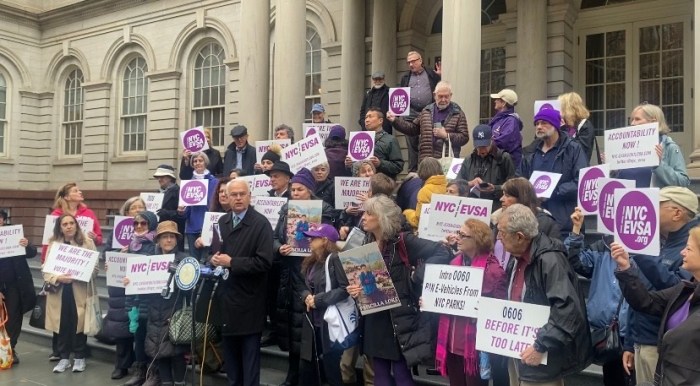By Kathianne Boniello
At least one northeast Queens community sprayed with pesticides by the city Health Department last week to prevent the spread of the West Nile virus has questioned the move, saying the city’s decision to spray Anvil on College Point, Bay Terrace and parts of Bayside threatened residents.
The northeast Queens spraying was announced several days before the city Health Department identified an 84-year-old Rosedale man as the city’s first West Nile victim this year. So far, no plans to spray in southeast Queens have been disclosed.
The spraying, the first in the borough for West Nile in 2002, was originally scheduled for Aug. 14 but canceled because of high wind speeds, the city Health Department said. It was rescheduled for between 8:30 p.m. Saturday and 2 a.m. Sunday, and a spokesman for the Health Department said the spraying was completed early Sunday morning.
But a member of the Bay Terrace Community Alliance, a neighborhood sitting in the middle of the sprayed area, said 8:30 p.m. was too early to beginning spraying.
“In the past spraying started no earlier than 10 p.m.,” Phil Konigsberg, a member of the Bay Terrace Community Alliance, said. “We’ve got a shopping center that is packed at 8:30 p.m., we’ve got children that are playing on the ballfields at Little Bay Park.”
A spokesman for the city Health Department said the agency received no official complaints about the northeast Queens spraying, but that any pesticide spraying would be done closer to dusk from now on.
“With our ground-based, targeted spraying our prime emphasis is on the human-biting mosquitoes,” spokesman Greg Butler said. “The human-biting mosquitoes are most active around dusk. That means that in order for the application to be effective it needs to be applied around the dusk hour.”
Butler said the agency tries to give 48 hours notice prior to pesticide spraying.
While the Rosedale victim was still hospitalized this week, the West Nile virus has been spreading across the nation and causing deaths in several states, including Louisiana.
The West Nile virus was first identified in the Western Hemisphere in August 1999, when infected residents from the Powell’s Cove section of Queens were diagnosed by an alert doctor at Flushing Hospital.
The virus is transmitted to humans by mosquitoes which contract it from infected birds. In 1999, four people died of West Nile in Queens and dozens throughout the city were sickened.
The city sparked controversy in 1999 when it chose the insecticide malathion to reduce the mosquito population and combat the spread of the virus. In the decade prior to 1999 the city’s insecticide campaign had been negligible.
In 2000 and 2001 the Health Department strove to focus on prevention as a way to fight West Nile and began targeting larvae to curb the mosquito population.
This weekend the Health Department sprayed a large section of northeast Queens, including College Point with the boundaries of 11th Avenue to the south, 135th Street to the east, College Place to the west and the shoreline on the north.
In Bay Terrace and Bayside, the areas sprayed were bounded by the Long Island Expressway to the south, the Cross Island Parkway to the north and east, and a stretch of Bell Boulevard, Francis Lewis Boulevard and Utopia Parkway to the west.
Some other areas were included in the spraying, such as Fort Totten, Powell’s Cove Park, Queensborough Community College, Crocheron Park, Clearview Park and golf course and the northern end of Alley Pond Park.
Reach reporter Kathianne Boniello by e-mail at Timesledgr@aol.com or call 229-0300, Ext. 146.


































